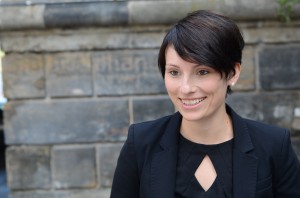
This article is about the customer community penguin manager John who is leading his customer penguin community through the four steps of the community lifecycle*. Within the article the reader will learn what customer community tasks a community manager has to do in the fourth step of the community lifecycle: the mitosis phase (learn more about our customer community approach here).
John, our Penguin Community Manager, has done everything right thanks to the expert advice and assistance from Pokeshot///SMZ. So far, he has skillfully navigated his customer community through the Inception and Establishment phases. He has also recently observed that user growth was dropping off as the community entered the Maturity phase, and that he needed to ramp up his efforts on other fronts.
Meanwhile, John’s customer community has become very stable. There is a high level of interaction among members, many of whom are now starting discussions and writing posts on their own initiative. The numbers are quite impressive. But for a while now, some of John’s penguin colleagues in the customer community have been telling him that the community is getting too big. Veteran community members, in particular, complain that the community no longer feels like a family and that too many different topics are being discussed. John now has to decide if splitting up his customer community would be a good idea.
This step must be considered very carefully because it could involve a number of risks:
- The divided communities would return to the Inception phase, requiring them to attract new members. However, it is by no means certain that all of the newly formed communities would reach a critical mass.
- A split-up would also entail the original customer community losing some of its members.
- Multipliers could feel misunderstood due to their diminished influence within the community.
Because of the increasing size of the customer community and the prevailing sentiment among members, John makes the decision to split up the community. This is a very critical step for him since it means undoing existing structures. So it’s important that he proceeds carefully with the split-up, keeping in mind the following points:
- The creation of new independent customer communities should not occur along topic-specific lines only. He should consult closely with his multipliers in order to identify what members are mainly interested in and where the division should be made.
- It is essential to prepare the split-up in the same way that the original customer community was planned (conception – implementation – monitoring using change management principles – KPIs).
- It is absolutely necessary that the community managers of the individual communities receive training.
- The newly formed communities should be promoted in the original community so that its members learn about the new possibilities.
John can’t expect to accomplish all of this overnight. It will take some time to identify the right groups for the split-up, to conceive and implement the communities and to get members accustomed to the new structures. This new project marks the end of the penguin community series. John has already come a long way, but there’s still no telling how much further he has to go. His great degree of commitment, his creative ideas and his knack for knowing what penguins want, will hopefully translate into enduringly loyal communities.
Summary of the penguin community series and a critical assessment of the community lifecycle
John’s community passed through a total of four phases: Inception – Establishment – Maturity – Mitosis. While his community tasks in the first phase mainly centered on attracting and retaining members (Inception : building personal relationships), his focus in the following phases (Establishment , Maturity ) shifted to moving the community as a whole forward. But at some point his community became so big that it began to undercut the sense of familiarity. Members can no longer follow activities and events because there are simply too many of them. This is when John decided to split up his large aquatic community into smaller communities (Mitosis).
It should be pointed out that John is portrayed as someone who can do no wrong when it comes to the customer community of penguins. In real life there are additional factors that a community has to deal with (e.g. cost pressures, competition for members). These issues were omitted from this model example in order to reduce the complexity. The main aim here was to provide a good understanding of the community manager’s duties and responsibilities.
What’s more, a customer community usually takes a trial-and-error approach. You need to try out a host of ideas and then continue more intensively with those things that promote user engagement. It can take a considerable amount of time before you discover what works in your particular situation. You also need to re-examine your activities every so often because a customer community is always in flux (members come and go). The chronological order of the posts makes it seem as if everything proceeded like clockwork. This is not the case in the real world.
It should also be noted that not every customer community will pass through all four phases of the community lifecycle. Lots of communities will never reach the Mitosis phase simply by virtue of their niche focus.
The focus of the community is also critical to determining the community manager’s community tasks. The activities described here have been generalized and will vary greatly from community to community. The community manager of a support community, for instance, will not have to plan as many events as the community manager of an interest-based community.
[hr]
About the author:
Sandra Brückner, who studied business informatics at the Technical University of Dresden, has worked as social business consultant since 2012. She recently joined the Berlin-based social business consultancy and technology provider Pokeshot///SMZ, where she leverages her extensive intranet and community expertise to consult organizations on how to optimize their change management and community management processes.
*The community lifecycle model presented in this article is based on the works of Iriberri, A. & Leroy, G. (2009): A Life-Cycle Perspective on Online Community Success and Millington, R. (2013): The Online Community Lifecycle.

2 thoughts on “Customer Community Tasks [4/4] – Dealing with too much of a good thing, or how to break up what was so difficult to build up”
Comments are closed.